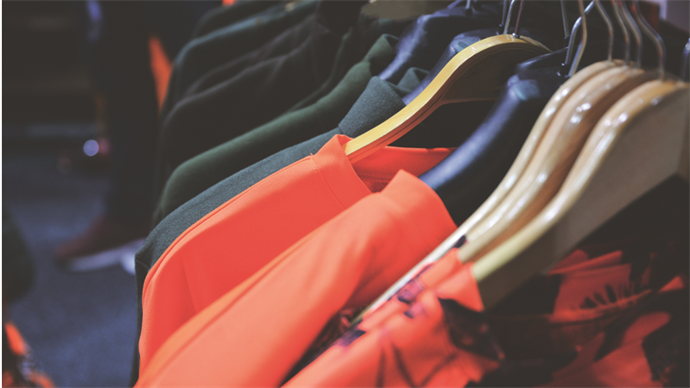The real estate industry has woken up to environmental, sustainable and governance (ESG) reporting, with the property world displaying new vigour to make sure that assets – and business models – are up to scratch.
However, one aspect that retail property owners can’t always control is the carbon footprint of their occupiers. Fashion brands can be brought in line in terms of the environmental efficiency of their bricks-and-mortar stores – but what about the long journey their garments have made to reach the shop floor?
It’s a potential conflict which is increasingly under the spotlight, thanks to the negative media coverage of fast fashion brands in recent years. The undercover Sunday Times investigation of Manchester-based clothing giant Boohoo found that workers in its Leicester factories were being paid as little as £3.50 (€4) an hour, details not lost on savvy Generation X and Millennial consumers.
Last year, a McKinsey survey asked shoppers if they would stop or significantly reduce their spending on a brand if they found it was not treating its employees or suppliers’ employees fairly: around 66% of respondents agreed.
Brands are equally expected to be aware of social issues impacting their clients, while steering clear of hypocrisy. Kantar Monitor research found that 54% of consumers believe brands ‘have an important role to play in social conversations about issues like #MeToo and race relations’. However, jumping on the Black Lives Matter movement with tokenistic marketing messages has been equally derided, with some fashion houses targeted for having all-white upper management teams.
Diversity matters are now fundamental for even the world’s most successful brands, as recently acknowledged by Michael Burke, chief executive of Louis Vuitton. ‘Seven or eight years ago, Louis Vuitton was introverted, in its bubble — very successful but a bubble,’ he says. ‘In the meantime, I think, Louis Vuitton has become a much more diverse environment, embracing diversity wholeheartedly.’
Fashion's carbon footprint
The biggest challenge, however, remains the carbon footprint of the world’s clothing producers. Notes Emanuele Pedrotti, partner at McKinsey and head of fashion and luxury for the Mediterranean region: ‘Every year, 130 billion garments are produced. Each garment, at the moment of manufacture, produces 16 kilos of carbon. That’s a total of 2 billion kilos of carbon annually – more than the domestic carbon production of Germany, France and the UK added together.’
He adds: ‘Fashion is a very polluting sector and there is a lot to be done. There are two main strands of thinking: you either cut down the number of garments produced annually, or you cut down the carbon. You can also make the life of the garment longer.’
Pedrotti emphasises that seemingly small actions can make a big difference at the manufacturing stage, comparing a basic t-shirt made in a sweatshop with a product made using organic cotton or partially recycled cotton. ‘It all adds up,’ he says. ‘You can reduce a garment’s carbon footprint by 30% quite easily.’
Savvy brands are alert to the carbon conversation. Iconic jeans manufacturer Levi Strauss & Co has already unveiled its 2025 Climate Action Strategy, which includes science-based targets for making significant reductions in carbon emissions. Some of its initiatives include passing to 100% renewable electricity by 2025, with a 40% absolute reduction in greenhouse gas emissions across its global supply chain between 2016 and the target date.
As Levis underlines, the vast majority of greenhouse gas emissions attached to its garments occur outside its owned-and-operated facilities – but the brand is taking responsibility all the same. The jeans label is not alone in tackling this thorny issue. Timberland has unveiled plans to source all of its natural materials from regenerative agriculture by 2030, while British department store Selfridges has promised to stop selling goods that are not compliant with its new sourcing standards by 2025.
Extending the life of the garment
Another key argument in the battle to reduce the industry’s carbon impact lies in the concept of extending the life of garments. Apart from spreading education and awareness – with repair culture also back in fashion – vintage and pre-loved garment sellers have a role to play. Typically, vintage stores have been small, independent boutiques without much of a voice in the fashion industry. But that, too, is changing.
Humana Vintage is a solidarity store chain managed by an international non-profit, Humana People to People. Present across Europe, in territories as diverse as Italy, Austria, Estonia and Hungary, it sells preloved garments which are collected from its own charity bins.
Humana’s parent is active in 45 countries across five continents, coordinating interventions across Africa, India and Latin America in the areas of education and training, fighting against epidemics, agricultural development and food security. Meanwhile, its pre-loved garment chain is growing rapidly.
In Italy alone, there are now 10 Humana Vintage shops with the group targeting a portfolio of at least 25 nationwide. ‘There are two types of sale in our stores: second hand, and actual vintage,’ explains Luca Gilardi, regional manager retail at Humana People to People Italy. ‘Second hand is now growing in popularity thanks to the careful selection of the garments displayed in our stores. It fits with a lot of ethical choices.’
Adds Gilardi: ‘We have never opened in a shopping centre before, but attended Mapic Italy recently with an idea to dialogue with the retail real estate industry. We are curious about the idea of selling used-clothing in shopping centres – it may be complex from a legislative perspective. We also need huge stores. Some of our shops cover as much as 6,000 m², and we need at least 200 m².’
Humana’s first steps in talking to shopping centre landlords are a reminder that the survival of physical retail is about embracing change; vintage stores are also compelling for their completely unique, revolving inventory which attracts regular visitors. As shoppers continue to talk with their feet, the future of physical retail will be seen in difficult choices, including ethical ones.



































